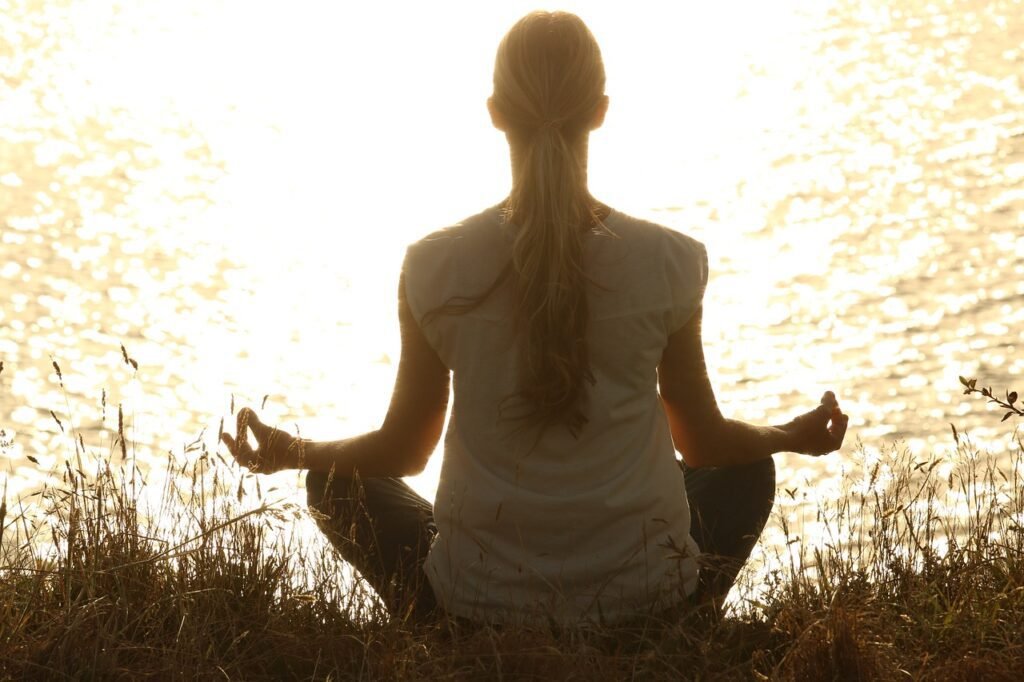Yoga, an ancient practice rooted in Indian philosophy, has become a popular form of exercise and stress relief in the modern world. This article delves into the various benefits of yoga for stress relief, provides practical tips for beginners, and shows how integrating yoga into your daily routine can enhance overall well-being.
Understanding Yoga
Yoga is more than just physical postures; it’s a holistic practice that includes breath control, meditation, and specific bodily postures. It is known for promoting physical and mental well-being.
Benefits of Yoga for Stress Relief
- Mind-Body Connection: Yoga helps bridge the gap between mind and body, fostering a greater awareness of how your body feels during stress.
- Breathing Techniques: Pranayama, or yogic breathing, is a core part of yoga. These breathing exercises can significantly reduce stress and improve overall health.
- Physical Benefits: Regular yoga can improve flexibility, strength, and posture, contributing to a better physical response to stress.
- Mental Clarity: Meditation and mindfulness in yoga help in achieving a more precise, calmer mind, which can help in stress management.
- Emotional Resilience: Regular practice can enhance your ability to remain calm, focused, and balanced during stressful situations.
Yoga for Beginners: Getting Started
- Choose the Right Style: There are various styles of yoga, like Hatha, Vinyasa, and Kundalini. Beginners may start with Hatha Yoga, which focuses on basic postures at a comfortable pace.
- Create a Comfortable Space: Ensure you have a quiet, open space to practice, free from distractions.
- Invest in a Good Yoga Mat: A good mat provides cushioning and grip, enhancing your practice.
- Start with Beginner Classes: Join a beginner’s class or follow online tutorials designed for beginners.
- Listen to Your Body: Be mindful and avoid pushing your body into discomfort or pain.
Incorporating Yoga into Your Daily Routine
- Set a Specific Time: Dedicate a specific time each day for yoga to create a routine.
- Short Sessions: Even 10-15 minutes of yoga can be beneficial, so don’t worry if you can’t commit to a long session.
- Use Apps for Guidance: Apps like ‘Daily Yoga‘ offer guided sessions and can help track your progress.
- Combine Yoga with Other Activities: You can incorporate yoga into your daily life, like stretching while watching TV.
- Attend Workshops or Retreats: Occasionally, participating in workshops or retreats can deepen your practice and commitment.
Conclusion
Yoga offers a holistic approach to stress relief, combining physical postures, breathing exercises, and meditation. By starting with beginner-friendly practices and gradually incorporating yoga into your daily routine, you can harness its benefits for physical and mental health. Remember, the key is consistency and listening to your body.
Utilizing resources like the ‘Daily Yoga app can provide structured guidance and support for those interested in starting their yoga journey. Download the Daily Yoga App
Final Thoughts
Yoga is a valuable tool for stress management and overall well-being. Whether you’re a beginner or returning to yoga after a break, the practice is always waiting to welcome you with its myriad benefits. Remember, the journey of yoga is one of personal growth and self-discovery, and every small step on this path can significantly reduce stress and enhance quality of life.

